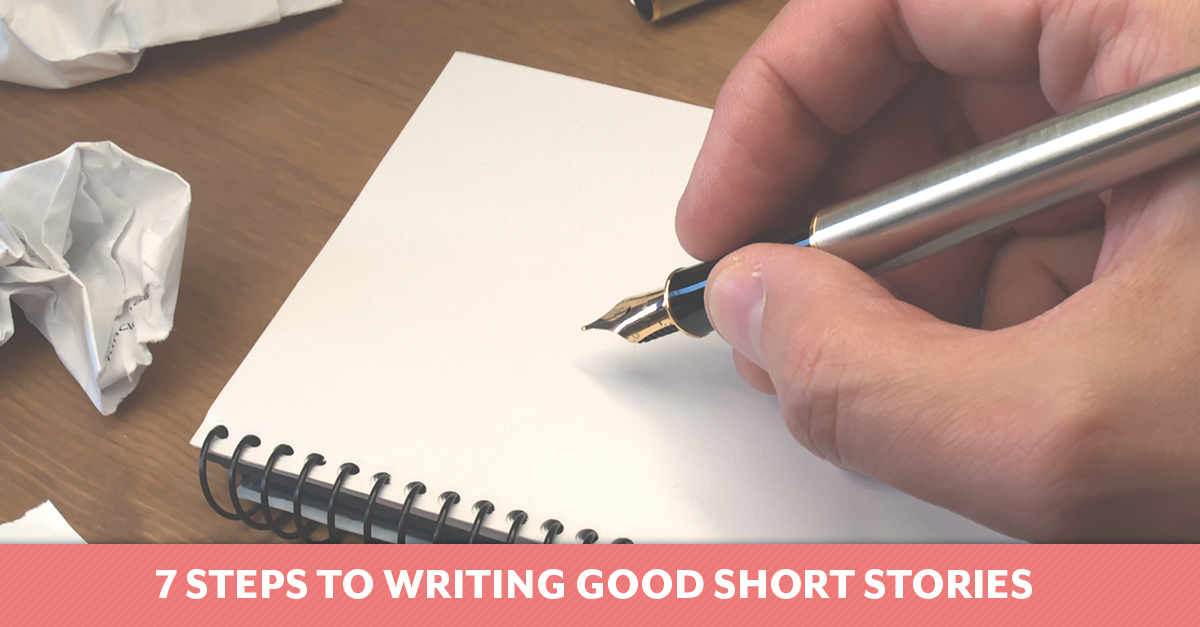Seven Steps to Writing Good Short Stories
Posted in Homeschool View on Thursday, March 1, 2012

Does your child love to read and tell stories, yet balk when asked to write one? Like most novice writers, he may need extra direction to successfully express his creative ideas without getting lost in the writing process. To make short story writing less threatening and easier, simplify the writing process with this step-by-step procedure taken from unit 6 of Monarch English II titled "The Short Story":
Pick a theme - Have your child focus on a central idea and choose a theme that draws from past experiences. This theme will then become the skeleton or framework on which the plot, characters, and setting are hung. Your child's writing should follow a narrow subject line and not get sidetracked from the main point. Like a photographer with his camera ready before taking a picture, your child should have his theme well established in his mind before writing and be able to express it clearly in one sentence.
Develop the characters - Your child's short story should be limited to a few incidental characters, including a main character known as the protagonist and an antagonist who opposes him. Help your young author imagine his characters' looks (height, weight, build), mannerisms (tone of voice, favorite expressions), and probable background (early education, environment, social class). When writing, make sure your child uses action and dialogue rather than descriptive background paragraphs to illustrate one or two outstanding traits in each character.
Create the setting - Since a short story's events cover a small amount of time (one day or even one hour), a good setting is essential in creating the mood that puts a reader on familiar ground with the characters. Have your child make the setting real by appealing to a reader's five senses. Don't let your child overwhelm or slow the action with too many details, but suggest how a place might smell, sound, look, feel, and taste. Have your child imagine himself in the scene to paint a vivid picture.
Establish the point of view and tense - Have your child pick a point of view that best suits his story:
- • 1st person - Limited to only the main character's perspective using "I" and "me."
- • 2nd person - Tells the short story from a "you" point of view. For example, "You enter the deserted house, and a chill runs through you."
- • 3rd person - The story is told through one character's perspective.
- • 3rd person omniscient - Several characters present their thoughts and experiences.
Also, have your child decide the tense or the time frame when the story takes place. If the story is happening now, choose the present tense. If the action happened yesterday or when a character was younger, he should write in the past tense.
Note: After deciding the point of view and tense, it is imperative your child doesn't switch back and forth in his writing.
Outline the plot - Make sure your child's plot works with a definite beginning, middle, and end. Start with an interesting paragraph that grabs a reader's attention, introduces the characters, and gives an idea of the problems they face. Next, have your child determine two or three events that build the external conflict between characters or an internal conflict within the main character. Build up the events into the most interesting part of the story, the climax, and keep the reader guessing until the last moment. Follow the climax with the denouement that concludes the story by providing a resolution that ties up any loose ends. Just as in life, however, tell your child that not every story needs to have a happy ending.
Imagine the dialogue - Role play with your child and let him hear the natural flow of a conversation. Encourage him to make the dialogue reveal his theme by what the characters say and how they say it. Be sure he doesn't pad the characters with needless dialogue; instead, whittle his conversations down to essential comments that advance the plot.
Compose the story - After completing the above steps, your child is ready to begin writing. Have him write as long as he can, while the scenes and people are fresh in his mind. It's best to write through the entire story before going back to revise areas where dull stretches need more interesting language, the writing is not clear, or points are missing from the plot.
Remember, a short-story is designed to be read in one sitting. Therefore, a writer must plunge into his story quickly, tell it in a series of dramatic action pictures, and conclude it in a few words after the action has ended. A simple, but easy way to help your homeschooler picture a short story's structure is to have him imagine this short story:
- • Put a man up a tree
- • Throw stones at him
- • Get him down
Most importantly, encourage your child to follow his instincts as he begins his writing. Although this may cause him to deviate somewhat from his original outline, his creative thoughts and ideas will help him "show" instead of "tell," which results in a captivating short story that is a delight to read.
Comments(1 comment)
SUAN F 04/17/2012 04:24:56
What a great article ! I\'ve saved it on to my \" favorites \" and just may have to purchase that Monarch unit when we are ready for short story writing. This makes it all sound fun !